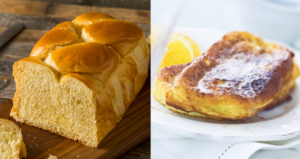Uncover The Mystery: Why Does Roast Beef Get Shiny? The Answer Will Shock You!
What To Know
- When the roast beef is cooked at a low temperature for an extended period, the collagen breaks down and gelatin is released.
- A shiny roast beef is a testament to the culinary skills of the chef and a sign of a delicious meal to come.
- Yes, the shine is a natural result of the cooking process and does not affect the safety of the meat.
Roast beef, a culinary delight, often takes center stage at special occasions. However, there’s one peculiar phenomenon that can sometimes leave you scratching your head – why does roast beef get shiny? This blog post aims to shed light on this culinary mystery, exploring the scientific reasons behind this intriguing occurrence.
The Science Behind the Shine
The shiny appearance of roast beef is primarily due to a process called “gelatinization.” Gelatin, a protein derived from collagen, is present in the connective tissues of meat. When the roast beef is cooked at a low temperature for an extended period, the collagen breaks down and gelatin is released.
As the roast beef cools, the gelatin solidifies, forming a thin layer of jelly-like substance on the surface. This layer of gelatin reflects light, giving the roast beef its characteristic shiny appearance.
Factors Affecting the Shine
Several factors can influence the degree of shine on roast beef:
- Cooking Temperature: Lower cooking temperatures promote gelatinization, leading to a more pronounced shine.
- Cooking Time: Longer cooking times allow for more collagen to break down and release gelatin.
- Meat Cut: Cuts with higher collagen content, such as chuck roast or brisket, will tend to produce more shine.
- Marbling: The presence of fat within the meat can inhibit gelatinization, resulting in a less shiny surface.
- Resting: Allowing the roast beef to rest before carving allows the juices to redistribute, enhancing the shine.
The Role of Salt
Salt also plays a role in the shininess of roast beef. Salt draws moisture out of the meat, which can help to concentrate the gelatin on the surface. However, excessive salting can dehydrate the meat and inhibit gelatinization.
Enhancing the Shine
If you want to achieve a particularly shiny roast beef, here are a few tips:
- Use a cut with high collagen content.
- Cook at a low temperature (225-250°F) for several hours.
- Rest the roast beef for at least 30 minutes before carving.
- Brush the roast beef with a mixture of salt and water before cooking.
Avoiding the Shine
If you prefer a less shiny roast beef, you can take the following steps:
- Use a cut with lower collagen content.
- Cook at a higher temperature (300-350°F) for a shorter period.
- Carve the roast beef immediately after cooking.
- Trim off any excess fat before cooking.
The Significance of the Shine
The shine on roast beef is not merely an aesthetic quality. It also indicates that the meat has been cooked properly and is tender and juicy. A shiny roast beef is a testament to the culinary skills of the chef and a sign of a delicious meal to come.
Beyond Aesthetics: The Culinary Implications
The shiny surface of roast beef has a practical purpose beyond its visual appeal. It acts as a protective barrier, preventing moisture loss and preserving the tenderness of the meat. This layer of gelatin also helps to enhance the flavor and aroma of the roast beef.
Final Note: Embracing the Culinary Enigma
The shiny surface of roast beef is a culinary enigma that has intrigued and delighted diners for centuries. Understanding the science behind this phenomenon allows us to appreciate the complexities of the cooking process and to create roast beef that is both visually stunning and deliciously satisfying. So, next time you encounter a gleaming roast beef, embrace its shiny exterior as a testament to the culinary artistry that brought it to life.
Questions You May Have
Q: Why does my roast beef sometimes get a dark shiny surface?
A: This can be caused by overcooking or using a cut with excessive fat.
Q: Can I remove the shiny layer from roast beef?
A: Yes, you can trim it off before serving.
Q: Is it safe to eat shiny roast beef?
A: Yes, the shine is a natural result of the cooking process and does not affect the safety of the meat.
Q: How can I achieve a shiny roast beef without using salt?
A: Use a cut with high collagen content and cook at a low temperature for an extended period.
Q: What is the best way to reheat shiny roast beef?
A: Reheat it slowly in a low oven or in a covered dish in the microwave to prevent drying out.
